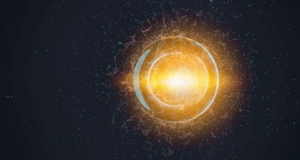On 8 August, 2021, 192 laser beams pumped vastly more power than the entire US electric grid into a small gold capsule and ignited, for a faction of a second, the same thermonuclear fire that powers the Sun.
The experiment in fusion power, conducted by the National Ignition Facility at Lawrence Livermore National Laboratory in California, is explored in detail in three new papers — one published in Physical Review Lettersand twopapers published in Physical Review E — that argue the researchers achieved “ignition,” a crucial step proving that controlled nuclear fusion is achievable. But definitions of what constitutes “ignition” vary, and however defined, the results of 2021 are still very far away from a practical fusion reactor, despite producing a very large amount of energy.
Nuclear fusion involves the fusion of two elements, typically isotopes of hydrogen, into the heavier element helium. It releases tremendous amounts of energy in the process, which is the process that powers stars like the Sun.
Switzerland’s melting glaciers reveal human remains and plane wreckage
A fusion power plant would produce abundant energy using only hydrogen from water as fuel, and producing helium as waste, without the risk of meltdowns or radiation. This is in contrast with nuclear fission, the type of reaction in contemporary nuclear power plants, which splits the nuclei of heavy elements like uranium to produce energy.
Read more: Independent
Ask me anything
Explore related questions





